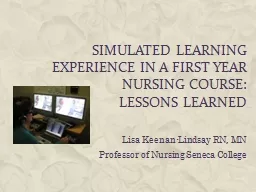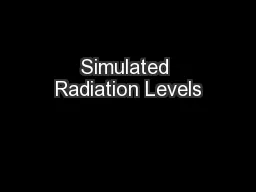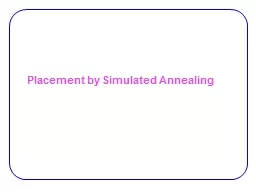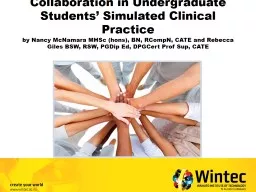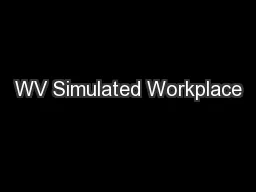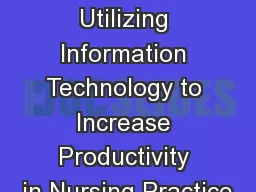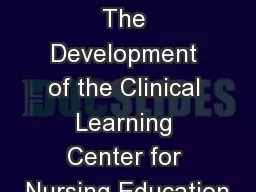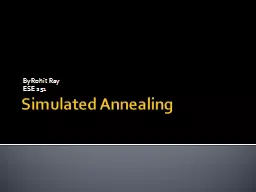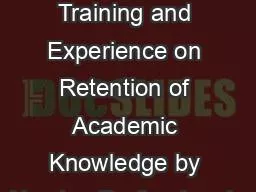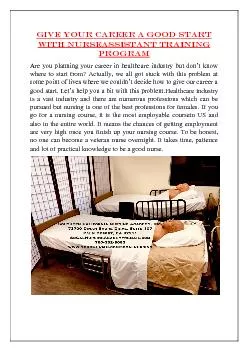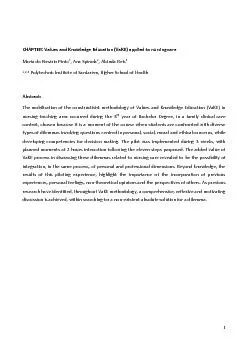PPT-Simulated Learning Experience in a First Year Nursing Course:
Author : cheryl-pisano | Published Date : 2018-02-25
Lessons Learned Lisa KeenanLindsay RN MN Professor of Nursing Seneca College Objectives To review the application of the use of simulated learning experience SLE
Presentation Embed Code
Download Presentation
Download Presentation The PPT/PDF document "Simulated Learning Experience in a First..." is the property of its rightful owner. Permission is granted to download and print the materials on this website for personal, non-commercial use only, and to display it on your personal computer provided you do not modify the materials and that you retain all copyright notices contained in the materials. By downloading content from our website, you accept the terms of this agreement.
Simulated Learning Experience in a First Year Nursing Course:: Transcript
Download Rules Of Document
"Simulated Learning Experience in a First Year Nursing Course:"The content belongs to its owner. You may download and print it for personal use, without modification, and keep all copyright notices. By downloading, you agree to these terms.
Related Documents

